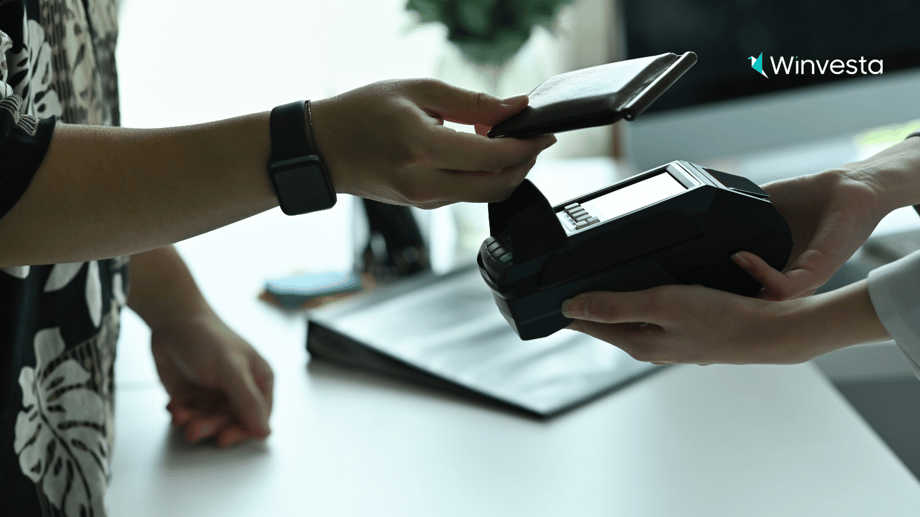Contents
Bank AD Code: Your Essential Guide to International Trade and Payments in 2025
6 minutes read
02 June 2025

If you’re an Indian exporter, freelancer, or business owner ready to step into the global market, you’ll quickly encounter the term Bank AD Code. It’s a critical piece of the international trading puzzle, yet many businesses are unsure of what it is, why it matters, or how to get it. This guide will demystify the Bank AD Code, explain its importance, and show you how Winvesta can help you make the most of your global journey.
What is a Bank AD Code?
A Bank AD Code (Authorized Dealer Code) is a 14-digit number assigned by banks authorized by the Reserve Bank of India (RBI) to handle foreign exchange transactions. Think of it as your business’s unique identifier for international trade—required by customs authorities and banks to process and track all your cross-border payments and receipts.
When you want to export goods or services from India, this code is essential for customs clearance and for ensuring that your international payments are routed through legitimate, compliant banking channels. Without it, your shipments can get stuck at the port, and you may face delays or even penalties.
The concept of the AD Code was introduced to streamline and regulate the flow of foreign exchange in and out of India. By assigning a unique code to every exporter and linking it to their bank account, the RBI and customs authorities can easily monitor and track all international transactions. This system not only ensures compliance with foreign exchange laws but also helps prevent money laundering and other financial crimes.
Why Do You Need an AD Code?
The AD Code plays a crucial role in streamlining your international trade operations. It acts as a bridge between your business, your bank, and government authorities. With an AD Code, customs officials can quickly verify your authorization to export, and banks can track and process your foreign currency transactions in line with RBI regulations.
This code is also important for maintaining a clear audit trail of your international transactions, which is vital for tax authorities and regulatory compliance. If you’re aiming to access government export incentives or schemes, having a registered AD Code is often a mandatory requirement.
For many businesses, especially those new to exporting, the AD Code can seem like just another bureaucratic hurdle. However, it’s a powerful tool that protects your business and ensures you’re operating within the law. By centralizing all your international transactions through a single code and bank account, you simplify your financial management and reduce the risk of errors or non-compliance.
How to Obtain Your Bank AD Code
The process of getting an AD Code is straightforward, but it does require some preparation. Here’s a step-by-step guide to help you navigate the process:
1. Obtain an Import Export Code (IEC)
Before you can apply for an AD Code, you need to have an Import Export Code (IEC) from the Directorate General of Foreign Trade (DGFT). The IEC is a 10-digit number that serves as your basic license for international trade. You can apply for an IEC online through the DGFT website by submitting the required documents and paying a nominal fee.
2. Choose an Authorized Dealer Bank
Not all banks are authorized to issue AD Codes. You’ll need to select a bank that has been approved by the RBI to handle foreign exchange transactions. Major banks like State Bank of India (SBI), HDFC Bank, ICICI Bank, and Axis Bank are commonly chosen by exporters for their experience and comprehensive international banking services.
3. Open a Current Account
Most banks require you to maintain a current account specifically for your international trade transactions. This account will be linked to your AD Code and used for all your foreign currency receipts and payments.
4. Gather the Required Documents
To apply for an AD Code, you’ll need to submit several documents to your bank. These typically include:
-
Copy of your IEC certificate
-
Company incorporation documents (such as the Certificate of Incorporation, Memorandum and Articles of Association for companies, or partnership deed for partnerships)
-
PAN card of the business entity
-
GST registration certificate
-
Address proof of your business premises
-
Board resolution authorizing international trade (for companies)
-
Bank account statements
5. Submit the Application
Fill out the bank’s AD Code application form with accurate details about your business, trade activities, and projected transaction volumes. Submit the form along with the required documents to your bank branch.
6. Verification and Approval
The bank will review your application and documents, conduct due diligence checks, and verify your eligibility. This process can take anywhere from a few days to a couple of weeks, depending on the bank and the completeness of your application.
7. Receive Your AD Code
Once your application is approved, the bank will issue your unique 14-digit AD Code. You’ll receive an official letter or certificate containing your AD Code, which you’ll need to register with customs authorities.
8. Register the AD Code at the Port
To complete the process, you must register your AD Code with the customs office at the port or airport where you plan to export your goods. This step ensures that customs officials can verify your authorization and process your shipments smoothly.
Benefits of Having an AD Code
%20(28).png?width=1600&height=900&name=Blog%20images%20(2)%20(28).png)
Having an AD Code brings several advantages to your business. It speeds up customs clearance, as authorities can instantly verify your authorization to export. By channeling all international transactions through a single bank account, you simplify your financial management and record-keeping. The AD Code also demonstrates your compliance with foreign exchange laws, which builds trust with international partners and can open doors to better banking services and export incentives.
Another significant benefit is the ability to track and monitor your international transactions easily. With all your foreign currency receipts and payments linked to your AD Code, you can generate detailed reports for accounting, tax filing, and regulatory purposes. This transparency not only helps you stay compliant but also gives you valuable insights into your business’s global performance.
Common Challenges and Solutions
Some businesses find the documentation process for the AD Code a bit daunting, especially when dealing with multiple banks or changing business structures. Delays can occur if documents are missing or outdated. To avoid these issues, it’s best to keep your business records organized and up to date, and to apply for your AD Code well in advance of your first export shipment.
If you’re unsure about the process, seeking professional guidance or working with a platform experienced in international trade can make things much easier and help you avoid common pitfalls.
Another challenge is managing multiple AD Codes if you work with more than one bank or export from different ports. It’s important to keep track of which code is registered at which port and ensure that your records are accurate. Regularly reviewing your AD Code registrations and updating them as needed can prevent confusion and delays.
Best Practices for Managing Your AD Code
Once you have your AD Code, it’s important to maintain accurate records of all transactions linked to it. If your business details change—such as your address, directors, or trade activities—notify your bank promptly to keep your code active and compliant. Understanding your bank’s specific procedures for AD Code usage will help you avoid unnecessary delays in your transactions.
It’s also a good idea to conduct periodic reviews of your AD Code registrations and related documentation. This proactive approach helps you stay ahead of regulatory changes and ensures that your business remains in good standing with customs and banking authorities.
The Future of AD Codes in Digital Trade
As international trade becomes more digital, the way businesses use AD Codes is evolving. Many banks now offer online platforms for managing your AD Code and related transactions, making it easier to track compliance and access your records. Some are even exploring blockchain technology and API integrations to further streamline the process and enhance security.
The move towards digital documentation and real-time compliance checks is expected to make the AD Code system even more efficient in the coming years. Businesses that embrace these technological advancements will be better positioned to compete in the global marketplace and take advantage of new opportunities.

Small financial savings lead to big wins for your business!
- Collect from 130+ countries.
- Local USD, GBP, CAD, EUR accounts.
- Free FIRA
How Winvesta Can Help
While the AD Code is your ticket to global trade, Winvesta makes your journey smoother and more rewarding. With Winvesta’s multi-currency accounts, you can receive payments from clients and marketplaces worldwide, directly in foreign currencies. Our platform is designed to ensure compliance with RBI and FEMA guidelines, so your international transactions are always in safe hands.
Winvesta also helps you keep your AD Code and compliance documents organized and accessible, making audits and customs checks hassle-free. By linking your AD Code correctly, you stay eligible for government export benefits, and you can enjoy faster settlements and transparent fees compared to traditional banks.
Our digital-first approach means you can manage your international payments, track your AD Code transactions, and access support—all from a single, user-friendly platform. Whether you’re a first-time exporter or an established global business, Winvesta provides the tools and expertise you need to succeed in the international arena.
Ready to streamline your international payments and take your business global?
Discover how Winvesta can help you collect payments from around the world, manage compliance, and grow your cross-border business.
With Winvesta, your AD Code isn’t just a compliance requirement—it’s your gateway to global growth.
Frequently asked questions about Bank AD code?

You can find your bank AD code by requesting it from the branch where your current account is held. The bank will issue an official AD code letter on their letterhead once your application is approved. You can also check your registered AD code and bank details on the ICEGATE portal after registration. If you’re unsure, contact your bank’s customer service or visit their website for assistance.
The bank branch AD code is a unique 14-digit number issued by an RBI-authorized bank, specific to the branch where your business account is maintained. It identifies both the bank and the particular branch for all your export-related foreign exchange transactions.
A bank AD code letter is an official document provided by your bank, printed on their letterhead, confirming the issuance of your AD code. You need this letter to register your AD code with customs at each port of export, enabling smooth customs clearance and compliance.
A 7-digit AD code typically refers to the branch code portion within the full 14-digit AD code. In the standard format, the first few digits represent the bank, the next set (often 7 digits) identifies the specific branch, and the remaining digits are unique to the exporter. However, for export and customs purposes, the full 14-digit AD code is required.

Contributed by Denila Lobo
Denila is a content writer at Winvesta. She crafts clear, concise content on international payments, helping freelancers and businesses easily navigate global financial solutions.



